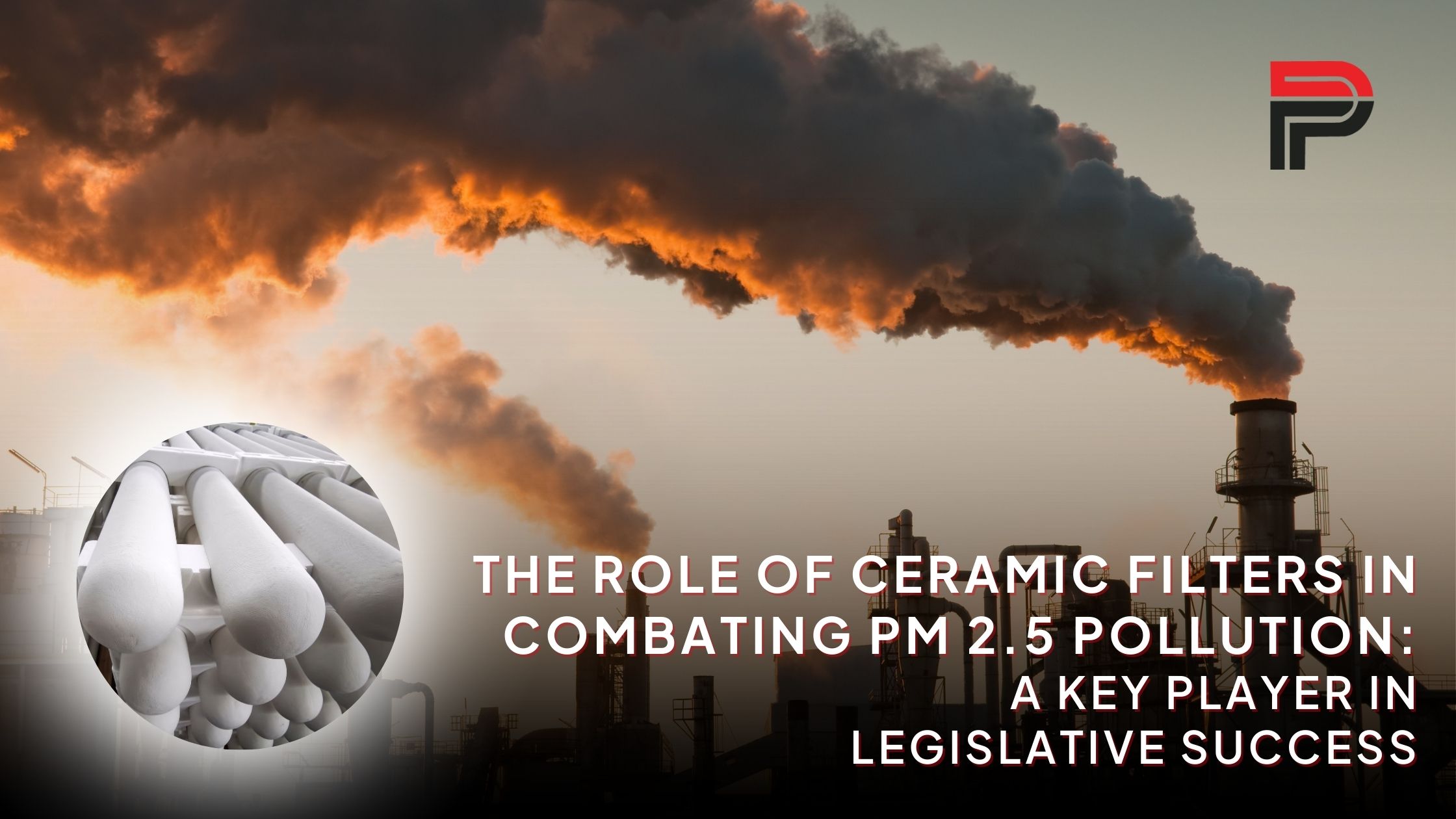Particulate matter (PM) 2.5 pollution, consisting of microscopic particles smaller than 2.5 micrometers, poses a significant threat to human health and the environment. The World Health Organization (WHO) identifies PM 2.5 as a major environmental risk factor for respiratory and cardiovascular diseases, as well as a contributor to climate change. To mitigate these risks, many countries have implemented legislation aimed at reducing PM 2.5 emissions. Precision Partners, together with Ceramic Filter Alliance (CFA) exclusively utilize the industry-leading Cerafil® Ceramic Filters, which have emerged as a vital technology with the potential to play a key role in achieving compliance with these regulations.
Cerafil® Ceramic Filters and PM 2.5
Cerafil® Ceramic filters offer several advantages that make them particularly well-suited for addressing PM 2.5 pollution. One of the primary benefits is their high efficiency in capturing particulate matter. Ceramic filter systems utilize a lime-based sorbent material that is injected into gas streams, which creates an even “cake” on the filter walls, that captures the PM 2.5. This waste is then pulsed off using a proprietary timing method from Precision Partners and collected as dry by-product that can either be recycled in the system or utilized for other purposes. This ability to capture particles is crucial for reducing ambient levels of PM 2.5 and improving air quality. Another key benefit of ceramic filters is their durability and longevity. Unlike some other types of air filtration systems, ceramic filters are resistant to corrosion and degradation, allowing them to maintain their effectiveness over long periods of time (10+ years). This durability makes ceramic filters a cost-effective option for reducing PM 2.5 pollution, as they require less frequent replacement compared to other types of filters.
Additionally, ceramic filters are environmentally friendly, as they are completely dry, single pass-through systems that greatly reduce utilities and consumables, creating lower CapEx over the system’s lifetime. This sustainability aspect is increasingly important in the context of PM 2.5 legislation, as governments and industries seek to reduce their environmental impact. By choosing ceramic filters, stakeholders can not only improve air quality but also minimize waste and resource consumption.
Ceramic filters have demonstrated their capability in various applications, showcasing their effectiveness in reducing PM 2.5 emissions. In industrial settings, ceramic filters are used in a wide range of processes, including power generation, manufacturing, and chemical production. These filters can remove up to 99% of PM 2.5 particles, making them an essential technology for industries seeking to comply with PM 2.5 legislation. At the same time, these ceramic filter systems can reduce NOx, sulfur oxides (SOx), long-chain volatile organic compounds (VOC), hazardous air pollutants (HAPs), dioxins & furans, and many more pollutants.
When operating in temperatures between 350F-850F, our system designs in many cases will exceed the requirements of permits, helping to future-proof the system against additional legislative measures. Additionally, Ceramic Filter Systems can provide multi-pollutant abatement capability and have a lower footprint than comparable technologies, making them an all-in-one solution.
Ceramic filters are a critical technology for addressing PM 2.5 pollution and achieving compliance with legislation aimed at reducing emissions. Their high efficiency, durability, and sustainability make them an attractive option for industries, governments, and individuals seeking to improve air quality. As PM 2.5 continues to pose a significant threat to public health and the environment, ceramic filters will play an increasingly important role in mitigating these risks and creating a cleaner, healthier future for all.

